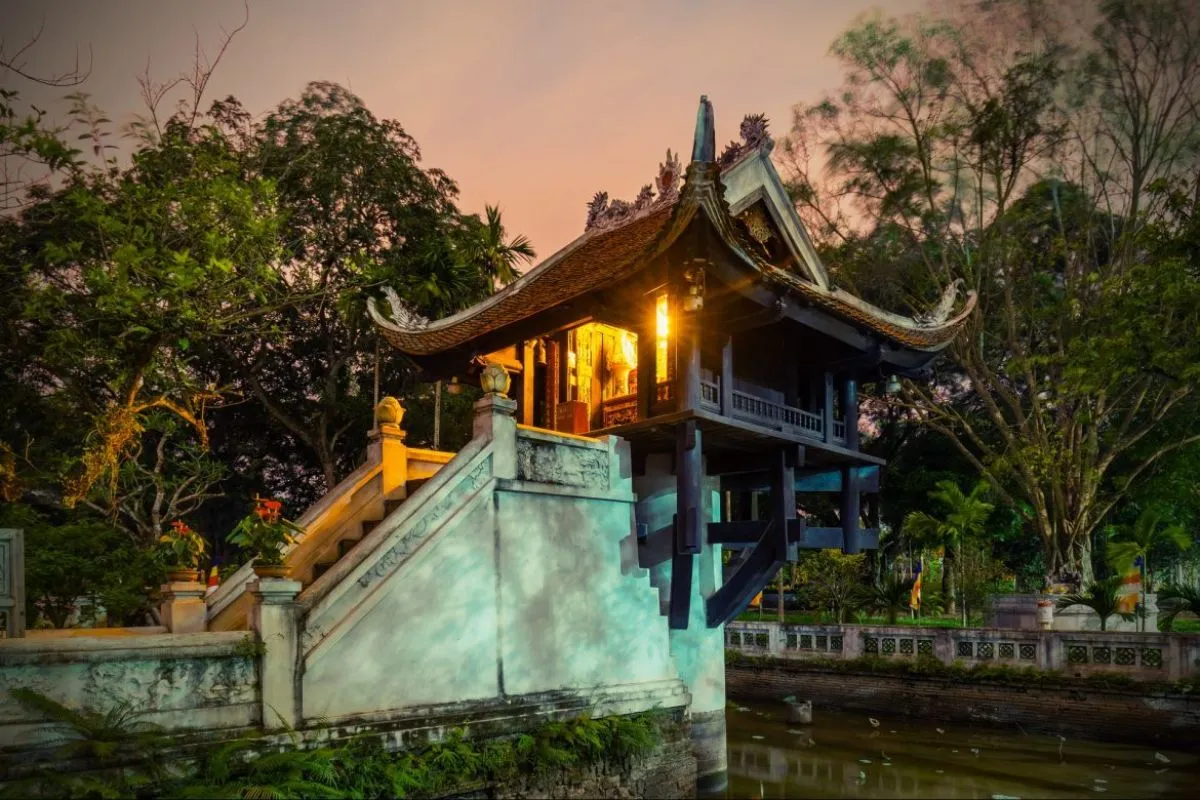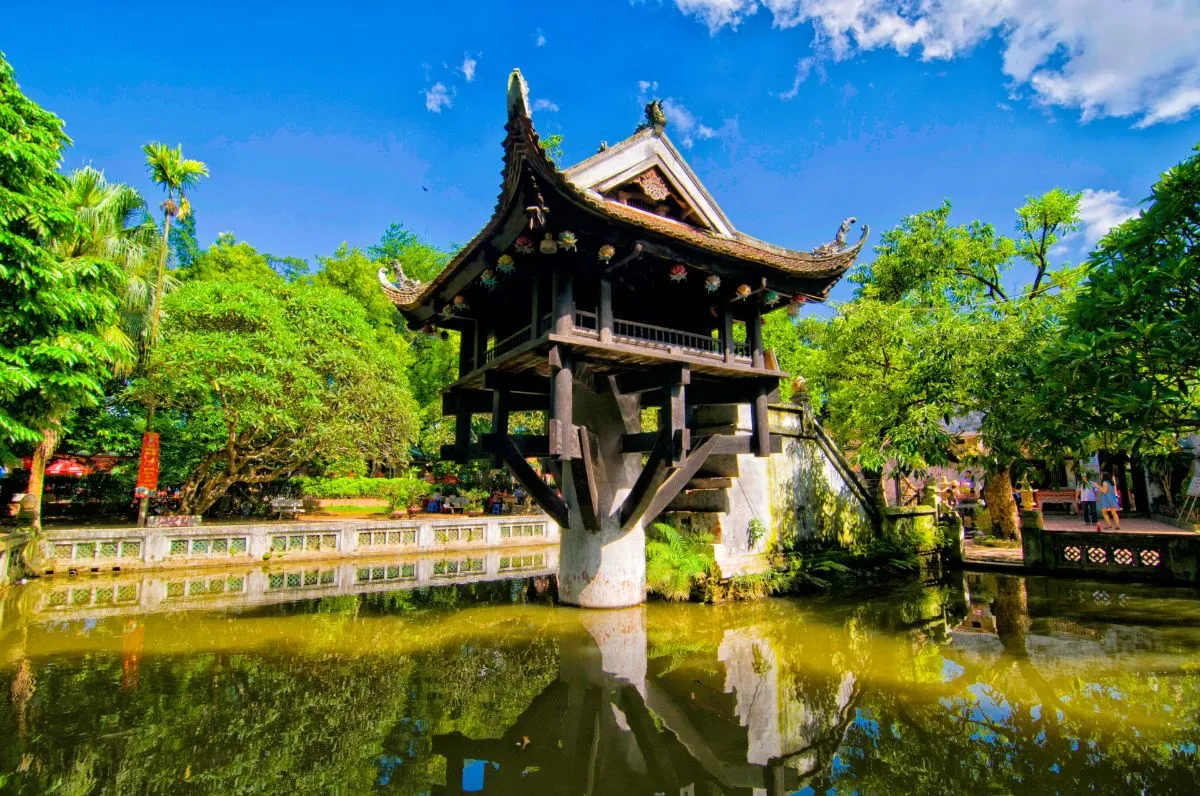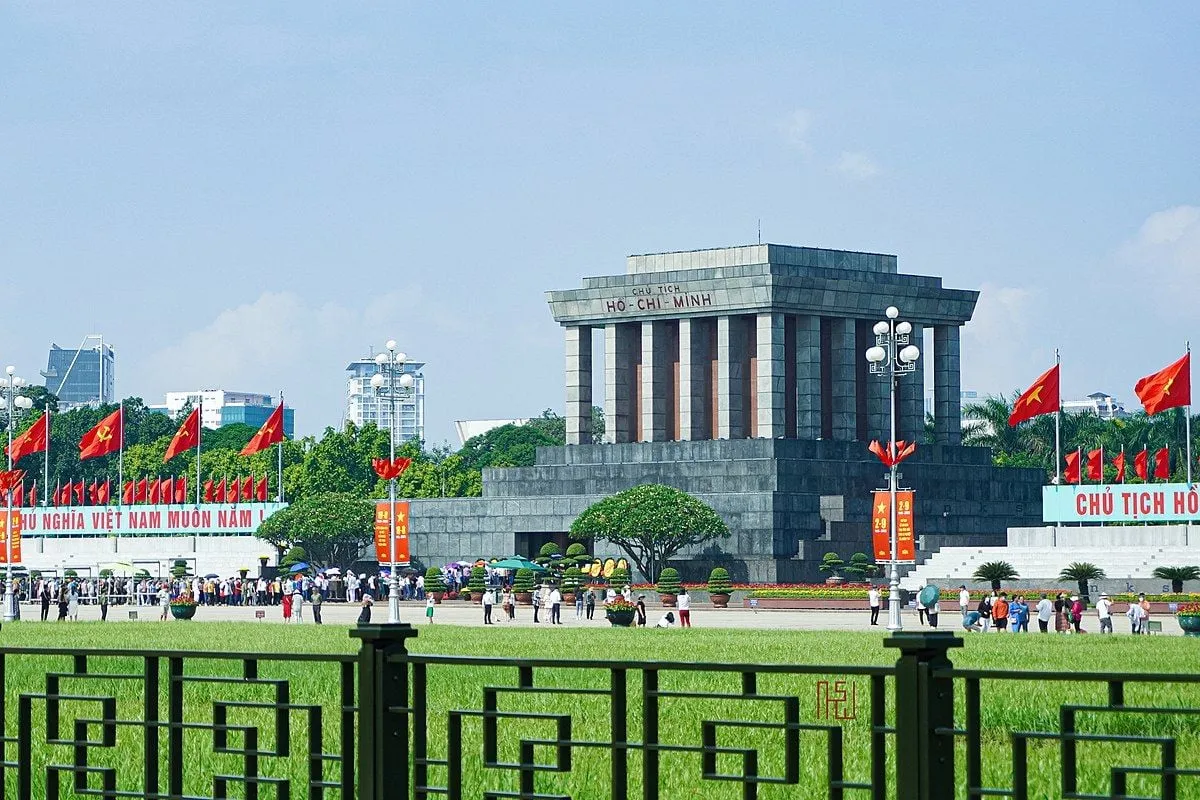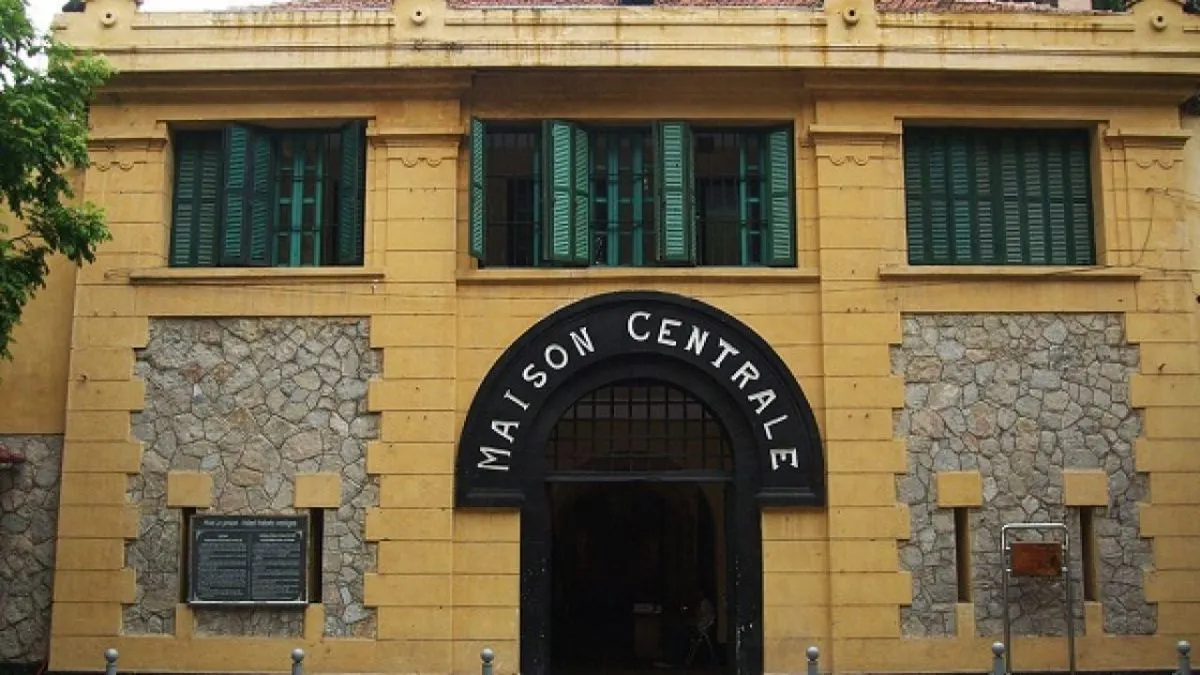Located in the heart of Hanoi, the One Pillar Pagoda stands majestically like a lotus flower rising from the water, not only an architectural marvel but also a cultural and historical symbol of the thousand-year-old capital. This small pagoda embodies great spiritual values, is the pride of the people of Hanoi, and a must-visit destination for tourists from all over the world.
One Pillar Pagoda is more than just a temple; it is a work of art, a historical witness, and a spiritual icon. Join “Du lịch khắp thế gian” to explore the wonders hidden within this unique “lotus,” to feel the intersection of architecture, history, culture, and belief.
Introduction to One Pillar Pagoda
One Pillar Pagoda, also known as Diên Hựu Pagoda, is located on Đội Cấn street, Ba Đình district, Hanoi, and is one of the most uniquely architected pagodas in Vietnam. The pagoda’s distinctive feature is its “one pillar” structure, which supports the entire small pagoda above, creating the image of a lotus rising from the water.
The pagoda was built in 1049 during the Lý Thái Tông dynasty. Historical records state that King Lý Thái Tông dreamt of the Bodhisattva Avalokiteśvara sitting on a lotus throne and leading the king up. Upon waking, the king recounted this dream to his court officials, who advised him to build a pagoda with a similar shape. From then on, One Pillar Pagoda was built, carrying the meaning of praying for offspring and blessings for the king and the country.
Through many ups and downs of history, One Pillar Pagoda has retained its unique architecture and become a cultural symbol of Hanoi. The pagoda is not only a sacred place of worship but also a tourist attraction for its unique architectural beauty and profound historical and cultural values.
History and Mythical Stories
One Pillar Pagoda is associated with a legend full of mystical colors. According to legend, King Lý Thái Tông, despite his old age, still had no son to succeed him. The king often worried about this. One night, he dreamed of the Bodhisattva Avalokiteśvara sitting on a lotus pedestal and giving him a baby boy. When he woke up, the king told the story to the court officials.
The monk Thiền Tuệ advised the king to build a pagoda in the shape of the lotus pedestal in his dream to pray for a child. The king listened and ordered the construction of Diên Hựu Pagoda (now One Pillar Pagoda). Later, the queen gave birth to a healthy prince. To thank the Buddha, the king had the pagoda restored and expanded, turning it into an important Buddhist center of Thăng Long citadel.
Throughout history, One Pillar Pagoda has undergone many restorations and renovations. In 1954, the pagoda was destroyed by the French army. However, it was later rebuilt according to its original architecture, continuing to be a cultural and historical symbol of Hanoi.
Unique Architecture and Deep Meaning of One Pillar Pagoda
The architecture of One Pillar Pagoda is extremely unique and full of symbolic meaning. The pagoda is built on a single stone pillar, about 4 meters high and 1.2 meters in diameter. At the top of the stone pillar is a system of wooden beams supporting the small pagoda above. The pagoda has an area of about 3 square meters, is tiled, and has four curved roofs in the shape of lotus petals.
The entire pagoda is placed on a square lake, symbolizing the vast ocean. The lake not only creates a serene beauty for the pagoda but also carries the meaning of purification and enlightenment.
The “one pillar” architecture of One Pillar Pagoda carries many profound meanings. The single stone pillar symbolizes the steadfastness and eternity of Buddhist law. The image of a lotus rising from the water symbolizes purity, transcendence, and the spirit of rising above all difficulties and challenges. One Pillar Pagoda is a harmonious combination of architecture, nature, and belief, creating a sacred and serene space.
Explore Destinations Near One Pillar Pagoda
One Pillar Pagoda is located in the center of Hanoi, near many famous historical and cultural sites. Visitors can combine visiting One Pillar Pagoda with the following places for a complete Hanoi exploration journey:
- Ho Chi Minh Mausoleum: Located just a few steps from One Pillar Pagoda, the Mausoleum is the final resting place of the beloved leader of the Vietnamese nation.
- Ho Chi Minh Museum: Located near the Mausoleum, the museum displays artifacts and documents about the life and career of President Ho Chi Minh.
- Imperial Citadel of Thăng Long: A UNESCO World Heritage Site, the power center of Vietnamese feudal dynasties.
- Temple of Literature – Quốc Tử Giám: Vietnam’s first university, where Confucius and sages are worshiped.
- Hỏa Lò Prison: A historical site marking the crimes of French colonialism against Vietnamese revolutionary soldiers.
Notes When Visiting One Pillar Pagoda
To have a complete and meaningful visit to One Pillar Pagoda, visitors should note the following:
- Dress code: Wear polite and discreet clothing when entering the pagoda. Avoid wearing revealing or offensive clothes.
- Behavior: Maintain a respectful and solemn attitude when in the pagoda. Do not speak loudly or laugh boisterously.
- Hygiene: Do not litter indiscriminately in the pagoda grounds.
- Incense offering: Offer incense in the designated places and do not stick incense into other objects.
- Time: It is advisable to visit the pagoda in the early morning or late afternoon to avoid crowds.
Conclusion
One Pillar Pagoda is not only a famous tourist destination but also a cultural, historical, and spiritual symbol of Hanoi. This small pagoda contains great values, is the pride of the people of the Capital, and is a must-visit destination for tourists from all over the world. Coming to One Pillar Pagoda, visitors not only admire the unique architectural beauty but also have the opportunity to learn about the history, culture, and beliefs of the Vietnamese people. Come and feel the serenity and sacredness of the thousand-year-old “lotus” in the heart of Hanoi.




